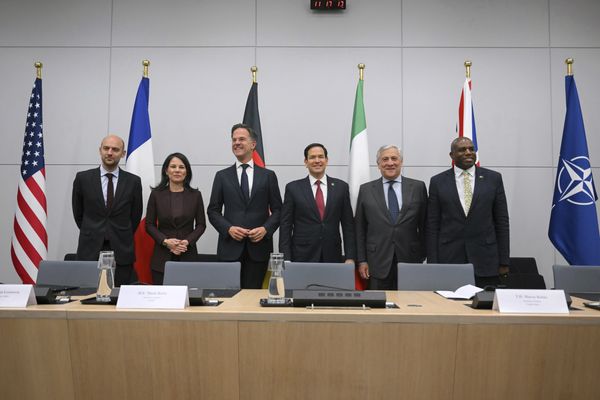
Syria is at a critical juncture as the country attempts to rebuild and reintegrate citizens returning to their homes amid a worsening humanitarian crisis, the UN has warned.
Since the ouster of former President Bashar al-Assad in December, about 1.2 million Syrians have gone home, including 885,000 internally displaced persons (IDPs) and 302,000 refugees, according to the latest data from the UN Humanitarian Coordinator.
Half of Syrians returning from outside the country came from Lebanon, 22% from Türkiye and 13% from Iraq, the International Organization for Migration (IOM) says. More than a quarter of those who have returned to their places of origin are residing in damaged or unfinished buildings, according to the IOM.
The UN refugee agency (UNHCR) predicts that as many as 3.5 million refugees and IDPs may return home this year, with people hopeful of a fresh start after 14 years of civil war.
The regime of al-Assad had tried to market the idea of a "safe return" for refugees in recent years, but many of those who did come back under his rule were arrested or forcibly conscripted into the army, while reconstruction of the country was very limited.
UN agencies and NGOs have warned of the challenges in reintegrating returnees, including a lack of basic services, security risks and missing legal documentation.
At least 7 million people remain displaced across the country, and severe economic challenges — from cash shortages to limited power — are hampering efforts to deliver aid, the UN said last week.
As of mid-March, the $1.25 billion (€1.15bn) UN-coordinated humanitarian response for the country was only 12.5% funded, with vital sectors such as shelter, non-food relief, water and sanitation, and agriculture and nutrition suffering from lack of resources.
"The cost of inaction [...] is much more expensive than responding to the immediate needs of the Syrian people," the UN Humanitarian Coordinator for Syria, Adam Abdelmoula, said in a briefing last week.
Fresh violence reopens old wounds
Abdelmoula said that recent hostilities in northern, southern and coastal Syria had displaced thousands of people anew and created difficulties for aid delivery.
While there was relative stability after the toppling of al-Assad in early December by insurgent groups led by the Islamist Islamic Hayat Tahrir al-Sham, or HTS, fresh violence broke out earlier this month between al-Assad loyalists from his Alawite minority ethnic group and government security forces.
More than 1,000 people died during several days of fighting, according to the UK-based Syrian Observatory for Human Rights, a war monitoring group, which said the death toll from the clashes was one of the highest in the decade.
Days after the violence that reopened the wounds of the civil war,** the interim government — led by interim President Ahmad al-Sharaa — struck a deal with the Kurdish-led authority that controls the country’s northeast.
Al-Sharaa also signed a temporary constitution that leaves Syria under Islamist rule while promising to protect the rights of all Syrians for five years during a transitional phase.
Speaking at a donor conference in Brussels last week, UN High Commissioner for Refugees Filippo Grandi urged greater global support and funding for displaced Syrians.
He said that there must be shelter, electricity, water, sanitation, education, work for people who return to their communities, as well as respect for their rights.
"But if we fail to help them stay in Syria, make no mistakes: the impact will be disastrous. Not only returns will stop, but those who did return (and probably many others) will move again," Grandi told the conference.







